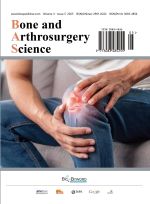Musculoskeletal Ultrasound to Evaluate the Effect of 4D PRO Suspension Rope Training Combined with Mulligan Technique on Non-specific Low Back Pain: A Single-blind Randomized Controlled Trial
Abstract
This trial was designed to evaluate the effects of 4D PRO suspension rope exercise combined with the Mulligan technique in non-specific low back pain (NLBP) patients by musculoskeletal ultrasound and clinical indicators. Sixty patients were randomly divided into the suspension group and the control group for eight weeks. The two groups were also treated with the Mulligan manipulation. The suspension group was treated combined with suspension rope training, while the control group was treated combined with traditional rehabilitation training. Pain, lumbar function and spinal range of motion were measured by a specialist before and after treatment. In addition, musculoskeletal ultrasound was used to measure the thickness of bilateral transversalis and multifidus muscles. After eight weeks, muscle thickness of bilateral transversalis and multifidus muscles, NRS, ODI and spinal range of motion in two groups were significantly better than those before treatment (P<0.05)). The suspension group showed significantly improvement compared to the control group regarding pain, lumbar function, spinal range of motion and the thickness of bilateral transversalis and multifidus muscles(P<0.05). 4D PRO Suspension rope training may be an effective exercise as an adjunctive therapy with Mulligan technology in non-specific low back pain.
References
Kalichman L, Li L, Guermazi A, et al., 2008, Facet Joint Osteoarthritis and Low Back Pain in the Community-Based Population. Spine, 33(23): 2560–2565.
Chou R, Qaseem A, Snow V, et al., 2007, Diagnosis and Treatment of Low Back Pain: A Joint Clinical Practice Guideline from the American College of Physicians and the American Pain Society. Ann Intern Med, 147: 478–491.
Benjamin H, Laurent P, Toby H, 2015, Short-Term Effects of Mulligan Mobilization with Movement on Pain, Disability, and Kinematic Spinal Movements in Patients with Nonspecific Low Back Pain: A Randomized Placebo-Controlled Trial. J Manipulative Physiol Ther, 38: 365–374.
Garcia J, Hernandez-Castro J, Nunez R, et al., 2014, Prevalence of Low Back Pain in Latin America: A Systematic Literature Review. J Pain Physician, 17(5): 379–391.
Wand B, O’Connell N, 2008, Chronic Non-Specific Low Back Pain—Sub-Groups or a Single Mechanism? BMC Musculoskeletal Disorders, 9: 1–15.
Maher C, Underwood M, Buchbinder R, 2017, Non-Specific Low Back Pain. Lancet, 389: 736–747.
Park H, Jeong T, Lee J, 2017, Effects of Sling Exercise on Flexibility, Balance Ability, Body Form, and Pain in Patients with Chronic Low Back Pain. Rehabil Nurs, 42: E1–E8.
Yoo Y, Lee Y, 2012, The Effect of Core Stabilization Exercises Using a Sling on Pain and Muscle Strength of Patients with Chronic Low Back Pain. J Phys Ther Sci, 24: 671–674.
Roh H, Cho W, Ryu W, et al., 2016, The Change of Pain and Lumbosacral Sagittal Alignment After Sling Exercise Therapy for Patients with Chronic Low Back Pain. J Phys Ther Sci, 28: 2789–2792.
Tinto A, Campanella M, Fasano M, 2017, Core Strengthening and Synchronized Swimming: TRX Suspension Training in Young Female Athletes. J Sports Med Phys Fitness, 57(6): 744–751.
Kang H, Jung J, Yu J, 2012, Comparison of Trunk Muscle Activity During Bridging Exercises Using a Sling in Patients with Low Back Pain. J Sports Sci Med, 11(3): 510.
Ali M, Sethi K, Noohu M, 2019, Comparison of Two Mobilization Techniques in Management of Chronic Non-Specific Low Back Pain. J Bodyw Mov Ther, 23(4): 918–923.
Hoy D, Bain C, Williams G, et al., 2012, A Systematic Review of the Global Prevalence of Low Back Pain. Arthritis Rheum, 64(6): 2028–2037.
Price D, Bush F, Long S, et al., 1994, A Comparison of Pain Measurement Characteristics of Mechanical Visual Analogue and Simple Numerical Rating Scales. Pain, 56(2): 217–226.
Fairbank J, Pynsent P, 2000, The Oswestry Disability Index. Spine, 25: 2940–2953.
Hides J, Miokovic T, Belavy D, et al., 2007, Ultrasound Imaging Assessment of Abdominal Muscle Function During Drawing-In of the Abdominal Wall: An Intrarater Reliability Study. J Orthop Sport Phys Ther, 37: 480–486.
Mannion A, Pulkovski N, Gubler D, et al., 2008, Muscle Thickness Changes During Abdominal Hollowing: An Assessment of Between-Day Measurement Error in Controls and Patients with Chronic Low Back Pain. Eur Spine J, 17: 494–501.
Ferreira P, Ferreira M, Nascimento D, et al., 2011, Discriminative and Reliability Analyses of Ultrasound Measurement of Abdominal Muscles Recruitment. Man Ther, 16: 463–469.
Kim W, Lee S, Lee D, 2011, Changes in the Cross-Sectional Area of Multifidus and Psoas in Unilateral Sciatica Caused by Lumbar Disc Herniation. J Korean Neurosurg Soc, 50(3): 201.
Lee S, Chan C, Lam T, et al., 2006, Relationship Between Low Back Pain and Lumbar Multifidus Size at Different Postures. Spine, 31(19): 2258–2262.
John E, Beith I, 2017, Can Activity Within the External Abdominal Oblique Be Measured Using Real-Time Ultrasound Imaging? Clin Biomech, 22(9): 972–979.
Kiesel K, Uhl T, Underwood F, et al., 2007, Measurement of Lumbar Multifidus Muscle Contraction with Rehabilitative Ultrasound Imaging. Man Ther, 12(2): 161–166.
Panjabi M, 1992, The Stabilizing System of the Spine. Part I. Function, Dysfunction, Adaptation, and Enhancement. J Spinal Disord, 5(4): 383.
Standaert C, Herring S, Pratt T, 2004, Rehabilitation of the Athlete with Low Back Pain. Curr Sports Med Rep, 3(1): 35–40.
Ferreira P, Ferreira M, Maher C, et al., 2010, Changes in Recruitment of Transversus Abdominis Correlate with Disability in People with Chronic Low Back Pain. Br J Sports Med, 44(16): 1166–1172.
Cho S, Park S, 2008, Immediate Effects of Isometric Trunk Stabilization Exercises with Suspension Device on Flexion Extension Ratio and Strength in Chronic Low Back Pain Patients. J Back Musculoskelet Rehabil, 23(7): 1–6.
Qaseem A, Wilt T, McLean R, et al., 2017, Noninvasive Treatments for Acute, Subacute, and Chronic Low Back Pain: A Clinical Practice Guideline from the American College of Physicians. Ann Intern Med, 116(7): 514–530.
Yue Y, Wang X, Xie B, et al., 2014, Sling Exercise for Chronic Low Back Pain: A Systematic Review and Meta-Analysis. PLoS One, 9(6): e99307.

